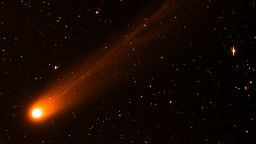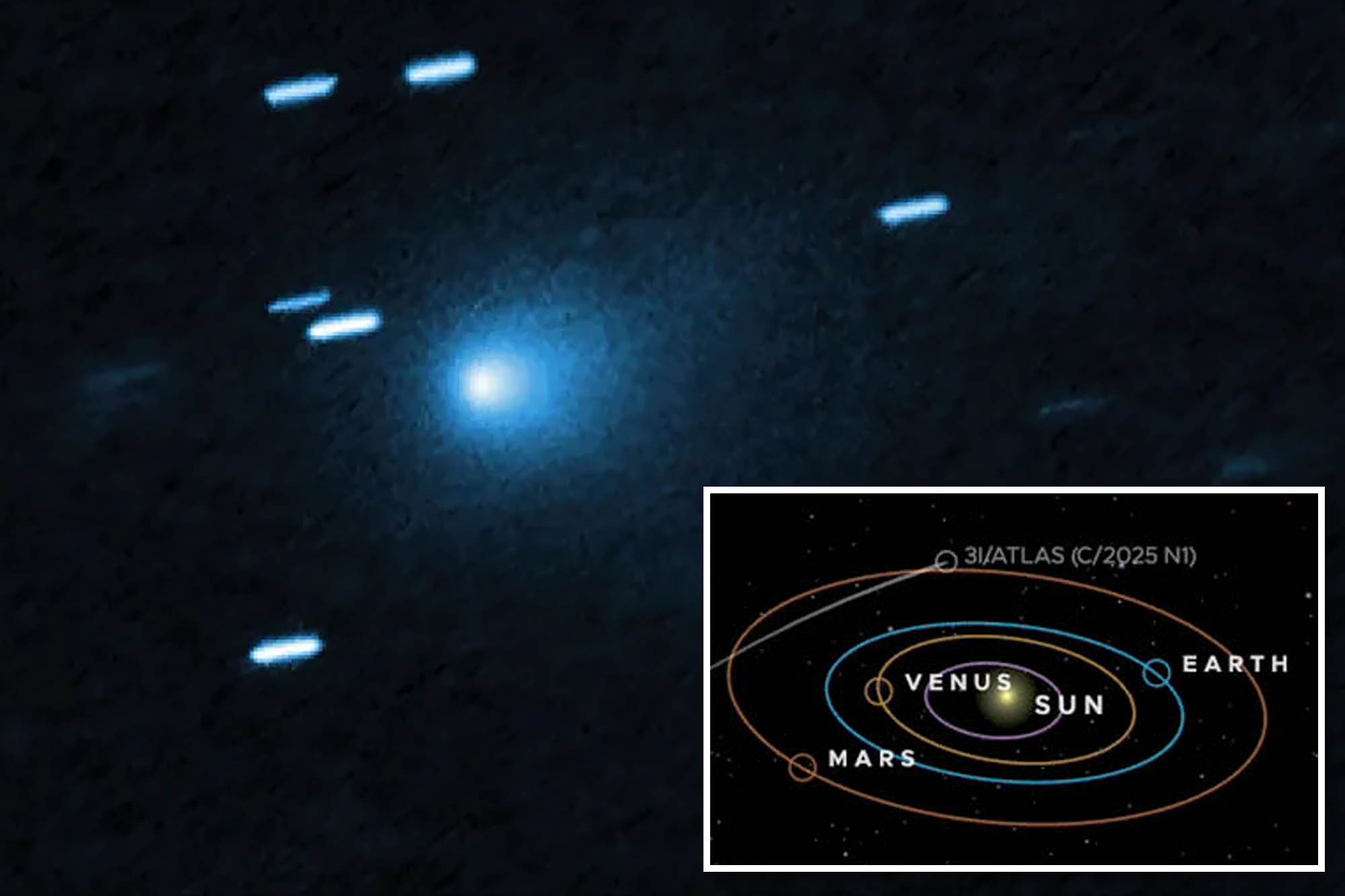An interstellar comet known as 3I/ATLAS has just completed its closest approach to the sun, coming within approximately 126 million miles (about 203 million kilometers) of our star. Despite its outgoing trajectory, the comet remains within the vicinity of our solar system for further observation.
Currently, the comet is positioned behind the sun from the perspective of ground-based telescopes on Earth. However, astronomers expect to regain visibility of 3I/ATLAS in a few weeks. According to Darryl Seligman, an assistant professor in the department of physics and astronomy at Michigan State University, stargazers with telescopes should have the opportunity to view the comet in the predawn sky starting on November 11, 2023.
The comet is set to make its closest approach to Earth on December 19, 2023, coming within about 168 million miles (approximately 270 million kilometers). The European Space Agency has confirmed that 3I/ATLAS poses no threat to our planet, allowing astronomers additional time to study this remarkable object.
Insights into an Interstellar Traveler
“When it gets closest to the sun, you get the most holistic view of the nucleus possible,” said Seligman.
Since its discovery on July 1, 2023, 3I/ATLAS has been a focal point for astronomers, being only the third confirmed interstellar object to pass through our solar system. Observations are crucial as they may provide insights into the comet’s composition and the star system from which it originated.
Comets are often described as “dirty snowballs,” made up of ice, dust, and rock. Their nuclei, when heated by proximity to stars, release gas and dust, forming the distinctive tails that characterize these celestial bodies. The study of 3I/ATLAS is particularly intriguing as astronomers aim to understand the composition of the volatiles it emits, which can reveal information about the primordial materials from which it formed.
Using advanced instruments like the Hubble Space Telescope and the James Webb Space Telescope, scientists have begun to analyze the emissions from the comet. Observations from the SPHEREx mission have identified gases including carbon dioxide, water, carbon monoxide, and carbonyl sulfide, alongside water ice as the comet approaches the sun.
Preliminary estimates suggest that 3I/ATLAS is between 3 billion and 11 billion years old, a significant age compared to the approximate 4.6 billion years of our solar system. Notably, carbon dioxide transitions from solid to gas more readily than most substances, indicating that the comet likely has never been close to another star until its recent encounter with the sun.
Upcoming Observations and Missions
Though 3I/ATLAS has faded from view for ground-based telescopes since October, it continues to be monitored by space missions. The Polarimeter to Unify the Corona and Heliosphere (PUNCH) and the Solar and Heliospheric Observatory (SOHO) have kept the comet in their sights.
On October 3, 2023, 3I/ATLAS approached Mars, coming within 18.6 million miles (around 30 million kilometers) of the planet. Although a government shutdown has hindered data sharing from NASA missions since October 1, the European Space Agency’s Mars Express and the ExoMars Trace Gas Orbiter attempted to capture images of the comet during October. Despite the technical difficulties, including the comet being significantly fainter than typical targets, the ExoMars mission managed to observe it as a distant fuzzy dot.
Looking ahead, the ESA’s Jupiter Icy Moons Explorer (Juice) is set to attempt observations of 3I/ATLAS in November, utilizing multiple instruments. However, the data from these observations is not expected to be received until February due to the spacecraft’s transmission rate.
Seligman emphasized the importance of the remaining months for observation, stating, “We’ve got several more months to observe it, and there’s going to be amazing science that comes out.”
As scientists continue to unlock the secrets of this interstellar visitor, the excitement surrounding 3I/ATLAS only grows, promising new insights into the nature of comets and the formation of celestial bodies beyond our solar system.







